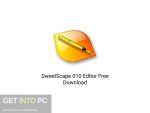Six Expert Tips to Foster Creativity in Technical Writing
Six Expert Tips to Foster Creativity in Technical Writing. Technical writing is a specific branch that focuses on producing technical and formal documentation for numerous fields.
The primary purpose of technical writing is to deliver highly complicated processes in a simple manner so that the readers comprehend the content and get clarity on the topic.
Writing technical documents might often be problematic and time-consuming, for writers can encounter hiccups regarding the style, sentence architecture, lexis, etc. Also, technical writing is a restricted field that requires accuracy and staying away from colloquial language and other literary devices. It typically creates a set of difficulties for writers, of which the gravest problem is a lack of creativity. Below, experts from a leading writing service share several tips to foster creativity in technical writing and make technical documentation clear, informative, and refined. You can also download WinRAR 5.40 Final 32 Bit 64 Bit Free Download.

Devour more literature and get inspiration from various sources
First and foremost, technical writers–whether experienced or beginners–are encouraged to read as much different literature as possible. Writing and reading go hand in hand, and the more one reads, the better their writing style becomes. “Working in technical writing, you must know of various ways to describe one element, as you never know whether the reader understands what you have in mind. So it would help if you need to use many approaches to explain a concept,” states a professional technical writer.
Experiment with your writing style
Although technical writing doesn’t usually allow writers to include slang, contractions, and many other components, you should work on your writing style and make it as diverse as possible. Thankfully, English is a vibrant language, consisting of multiple words, expressions, grammar structures, etc. You don’t necessarily need to apply informal constructions–like idioms–to diversify your style.
Furnish your writing with the proper punctuation
Writing is king, but without the right punctuation, it is barely a duke. Technical writing relies on proper punctuation, so make sure you know punctuation marks, their function, and when to add them for the best result.
At first, you might be frustrated because there are indeed too many marks. But we recommend learning their ins and outs and using them every time you have to produce technical documentation.
Besides, they can nurture your creativity, e.g., a semicolon will indicate that the following is a closely related sentence, so you should think of how to pair it with the content that goes before the mark.
Provide visuals
Studies have shown that people perceive visual information much better than when it’s heard. And while the text may be considered a piece of visual information, infographics, charts, tables, and other figures make comprehension more effective.
Visuals are widely used in technical writing. They help describe different notions and explain their importance. Essential as they seem to be, it all depends on the requirements. If the requirements request to insert visuals – add them. If not – don’t. We’ll touch upon it later on.
Liven up your paper and make it clear
For many fields, technical writing is pivotal. Without well-designed papers, companies might lack profits and end up unrecognized. Of course, some topics might be hard to process, let alone understandably write about them. Writers work hard to make sure the paper is readable.
• Analogies
• References
Needless to say, though, sometimes it is a Sisyphean task, and writers experience enormous problems explaining complex concepts. For many, it might even be a turning point to quit the job. If you face similar obstacles, looking for ways to liven up your paper and make it clear and readable, use the following elements:
• Narrative passages
• Conversations
Undoubtedly, the mentioned are often informal and instantly crossed out by technical writers. However, you can make such items pertain to the content. Yes, you most likely will break away from a serious tone by adding the above points. But believe it or not, it’s sometimes the best way to explain a concept, entertain the audience, and retain it, especially when its crucial manuals or documentation.
Before adding creative elements
The mentioned might sound like no-brainer tips, but don’t rush to implement everything from the above when working on technical documentation. As mentioned earlier, the requirements play a critical role and predetermine what the writer can and cannot include in the piece. Six Expert Tips to Foster Creativity in Technical Writing.
Also, check the industry and make sure the readers will perceive your tone correctly. It will help you project complex ideas in situations the receivers have already experienced, and let them draw parallel and comprehend what the document aims to deliver.








